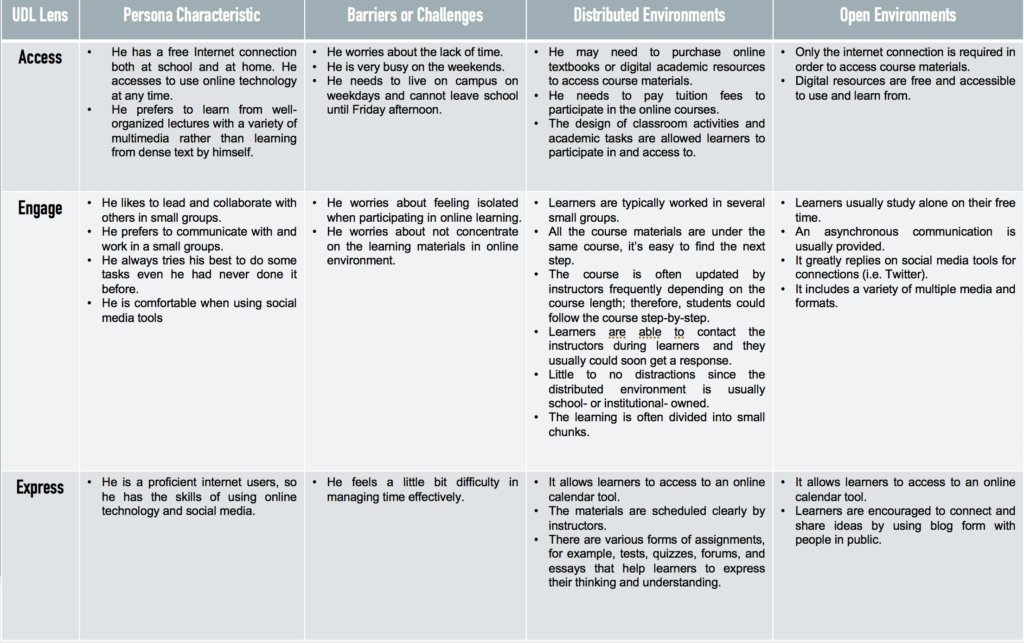
Will Jack be learning all online, face-to-face, or a combination of both? Where would the learning be asynchronous or synchronous? Why?
Our group thinks that the learning for Jack will be all online and asynchronous because his schedule cannot be fixed. He is very busy on the weekends due to the after-school programs and part-time work, so the free time that he can use to participate in this type of learning is after classes on weekdays. But, he may have any other homework to do during the time. Asynchronous online learning will be more useful for him because he can consume his learning materials and complete his online assignments at different times and it will be much more flexible and convenient for him.
Jack’s Ideal Learning Context
Jack will get more benefits from a distributed learning model. Jack wants to improve his English writing in order to get higher marks on IELTs test and apply for the university successfully; therefore, participating in a specialized program will be more important and necessary for him. An online program designed from an credible educational institution will provide a more directed and professional instruction to Jack and help him to know more about how to improve his English specifically. Also, Jack prefers to learning from a well-organized and scheduled lecture, so he would be more beneficial from a well-structured online course in a Learning Management System (i.e. Moodle). Additionally, Jack prefers to communicate with people in a relatively safe online environment and works in a small groups; therefore, a distributed environment will be more suitable for him because it allows learners to work with their classmates clearly.
The Barriers to Safe, Flexible, and Supportive Learning Environments and Experience.
We think that one of the biggest barriers to safe, flexible, and supportive learning environments and experiences that Jack may face is about the lack of time in his learning process. Due to the support from Jack’s parents, he does not need to worry too much about the tuition fees of this type of learning. However, he needs to live on campus from Monday to Friday and has to go to a few after-school programs on the weekends, so he finds that his schedule is always full and the free time that he can use is after classes on weekdays. However, he may still face to the lack of time due to his homework or preparation to quizzes in school. Therefore, our group thinks that the kinds of restrictions may prevent Jack from experiencing a flexible and supportive learning environment.
Equity, Social Justice or Cultural Considerations that Preventing Safe, Flexible, and Supportive Learning Experiences and Environments.
Our group does not think that there are any equity, social justice or cultural considerations that prevent safe, flexible, and supportive learning experience and environments to Jack. As a high-school student, his role is to learn knowledge and achieve learning goals in order to apply for the university successfully. He chooses distributed and/or open learning to help him to meet his learning goals and he also gets a lot of support from his parents.
Recent Comments